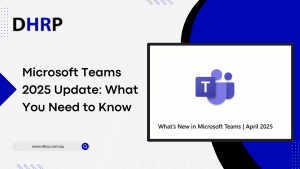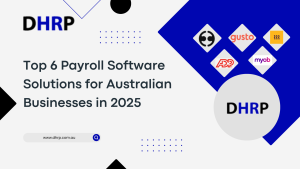Inaccurate paychecks, overlooked deductions, and input errors place significant pressure on managers and staff. While mastering modern payroll technology is difficult, even a single manual error can result in significant fines.
Furthermore, managing a multi-country payroll requires a variety of payroll providers, software systems, and data transfers.
Previously, we shared insights on common mistakes to avoid in payroll software implementation and payroll implementation: a guide to smooth client onboarding. Building on that foundation, we will now discuss the essential payroll software implementation checklist to help businesses streamline their processes effectively.
Before you dive into streamlining your payroll operations, make sure you have the right checklist in place. So, let’s get started!
What Do You Need to Know about the Payroll Implementation Checklist?
Well, there is a lot to prepare; we will help you with the most significant aspects of payroll or payroll software implementation. Once you talk to your Dynamics 365 payroll consultant, they can provide more clarity.
But for your homework, keep the following factors in mind.
Analyse and Document Your Processes
This is the most important part. Whatever the approach, everything should be properly documented. Document your processes from beginning to conclusion. Clearly describing the full scope of your payroll process will assist you and your payroll provider ensure that each stage is completed.
- Identify employee classifications (exempt vs. non-exempt) and pay frequencies.
- Compensation for expenses, if done through paychecks
- Benefits and deductions
- Data entry and system integration: Do you manually enter payroll information, or does your payroll system receive data from other systems, such as benefits and HR?
Clear Stakeholder Roles and Data Checks
Implementing a new payroll system necessitates close collaboration with human resources, finance, and legal teams to ensure accurate employee data, payroll records, and time tracking.
This aspect will assist you in establishing clear duties for each stakeholder, whether from internal teams or the payroll provider, ensuring that no information (such as tax withholdings, garnishments, or social security numbers) is overlooked.
Dashboard and Reporting
Never forget to ensure that your payroll implementation specialist can provide customisations in the dashboard. Although the Dynamics 365 payroll system has comprehensive features. But you can customise it to your business needs.
Remember that business intelligence features deliver data in reports, giving users insight into current processes. Aside from observing current trends, HR departments use reporting to analyse data to create forecasts and decisions based on them. Improve decision-making, find new opportunities, and boost overall operational efficiency.
Pay Close Attention to the Onboarding Phase
Configure the payroll software to meet regional tax, payroll, and labour legislation requirements. Establish pay rates, health insurance, retirement programs, and payroll tax schedules for all employees, including new hires.
This step entails designing a clear pay schedule, developing payroll procedures, and guaranteeing scalability for future development, whether managed in-house or outsourced to payroll services.
Verifying Employee Information
When setting up data migration, make sure all employee information is up to date. This contains personal information, tax withholding, and employment status. Accurate employee records are critical to proper payroll processing.
Double-check everything, including names and addresses, Social Security numbers, and federal income tax returns. This step helps to avoid errors that could lead to problems with other government entities. Moreover, when automated with payroll systems for small businesses, you can always stay on top of regulations.
Collect Previous Payroll Records
If you are a new employer and this is your first investment in payroll solutions, you will need to enter all of the prior employee data, such as personal details, compensation and benefits, payment methodology, and frequency, into the new system. This will not only maintain information consistency but will also automate all of your past records, which will actually help later in managing taxation and compliance.
If you were previously using an existing payroll system and wish to migrate to a new one, you must first understand all of the duties that your staff must accomplish and then create a list of the things that can be automated with your new system. Entering prior payroll information allows the payroll software to calculate taxes and deductions appropriately.
Maintain Compliance with Federal, State, and Local Laws
Payroll requires understanding and navigating all applicable labour laws and regulations. The more clearly you understand what is required of your company, the more you will be able to comply with the law and develop a dependable and trustworthy reputation.
This is not the time to make informed guesses—compliance errors and misclassifications swiftly result in government fines and notifications.
International Payroll Considerations
If your organisation employs international staff, there are additional aspects to address. This includes currency conversion, comprehending international tax rules, and adhering to foreign labour restrictions.
Ensure that your payroll system can handle several currencies and calculate taxes in accordance with the local rules of each nation.
Compliance with international payroll standards is critical for avoiding penalties and ensuring seamless operations. Understanding each country’s specific payroll regulations and standards will help you manage your global staff more successfully.
Conclusion
In conclusion, implementing a payroll system or leveraging payroll add-ons requires meticulous planning and attention to detail, from analysing processes and verifying data to ensuring compliance with laws and regulations.
A well-executed payroll implementation not only minimises errors but also enhances operational efficiency and employee satisfaction. For businesses with global teams, managing international payroll complexities becomes equally critical.
At DHRP, we specialise in Dynamics 365 Payroll Implementation, offering tailored solutions to streamline your payroll processes while ensuring compliance and scalability.
With our expertise, you can focus on growing your business, confident that your payroll operations are in expert hands. Connect with us today to get started!




































































































